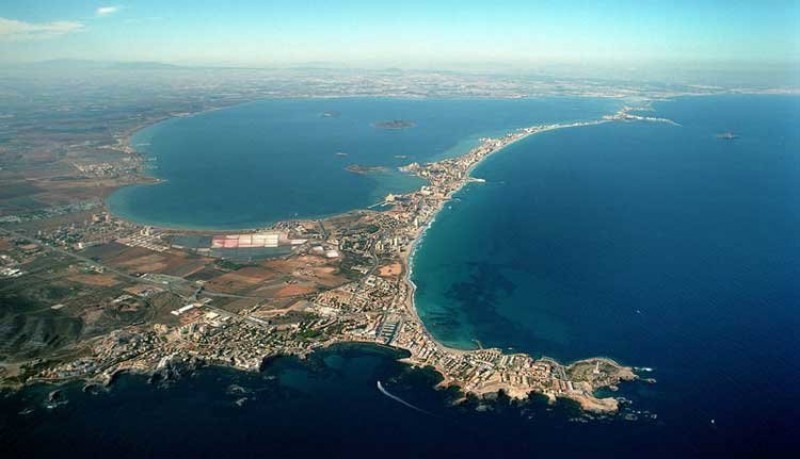

- EDITIONS:
 Spanish News Today
Spanish News Today
 Murcia Today
Murcia Today
 Alicante Today
Alicante Today
Date Published: 19/07/2021
ARCHIVED - Further criminal cases opened against illegal irrigation in the Mar Menor
The CHS, Guardia Civil and regional government of Murcia are all cracking down on those responsible for illegal irrigation of the countryside surrounding the Mar Menor

The deterioration of the marine environment of the Mar Menor, Europe’s largest saltwater lagoon, has been a topic of hot debate in recent years, with the Segura Hydrographic Confederation (CHS) working with the regional and central governments, the Guardia Civíl, as well as the European Union, to crack down on illegal desalination and irrigation sites and reduce the environmental stress on the lagoon.
The desalination process carried out by many farmers illegally in the Campo de Cartagena leads to serious environmental issues, as the nitrate-loaded waste by-product produced by the process is flushed back into the aquifer below the Campo de Cartagena, and some of the nitrates inevitably find their way into the lagoon following heavy rain, as they are washed out of the soil and down through the rambla network into the lagoon, the subsequent algal bloom altering the fragile environment and adversely affecting marine life.
In addition, it has been found that 90 per cent of livestock farming concerns are in breach of water usage regulations in the area, mainly relating to leakages from approximately 500 manure storage pools, and from here harmful substances either filter down into the aquifer or run off into the lagoon.
Environmentalists have been warning of the problems for decades, and as part of a wide-ranging programme of actions the CHS is now taking action by closing down the illegal operations and fining those responsible for them, as well as working to reduce the amount of irrigation carried out within the area covering the vast water aquifer below the Cartagena countryside.
According to the Confederation, a total of 657 unauthorised desalination plants have been identified in the Campo de Cartagena since 2018 which has so far resulted in 461 sanctions affecting more than 4,000 hectares of land around the Mar Menor. A further 3,414 hectares have been identified as possible sites for illegal desalination, according to the latest data reported by the Ministry for Ecological Transition.
Correspondingly, the number of criminal cases opened by the courts for the extraction of water without authorization has increased from 393 to 461.
Overall, the Ministry has confirmed that its inspectors have reviewed an area of more than 13,865 hectares, of which 11,560 (approximately 83 percent) were found to have an illegal irrigation and water extraction system.
While the regional government of Murcia and the CHS have taken great strides to reduce the number of illegal desalination plants in operation on the Mar Menor the problem is multi-faceted and there appears to be no short-term solutions. Given the complexities of the issues, any resolution will have to involve several measures, with the closure of illegal plants to prevent excess water run-off being only the first step.
One of the other issues facing the lagoon relates to water and mining waste run-off linked to the mining sector, which is part of the long history of mineral mining in the land surrounding the Mar Menor. La Unión is the principal source of mineral run-off as the area has been extensively mined for more than 2,000 years and the landscape surrounding the town of la Unión is pockmarked with the chimneys and abandoned mineworkings relating to this sector, as well as large piles of mineral waste.
The CHS has confirmed that it has now allocated €40 million from EU funds to begin a series of works next year, beginning with building retention dams before dredging the sediment laden water containing heavy metals which forms after incidents of rain, and some of which ends up in the Mar Menor.
The channels will be repopulated with species able to resist the build-up of metals in the water and plant barriers will be created between the valley and the Mar Menor itself. Specially designed flood plains will be developed in low-lying areas to catch the water flowing down from higher areas.
The situation relating to the Mar Menor is complicated: Click here for a detailed overview explaining the complexities of why it is so difficult to find short-term solutions to the current problems facing the lagoon.
Contact Murcia Today: Editorial 000 000 000 /
Office 000 000 000






























